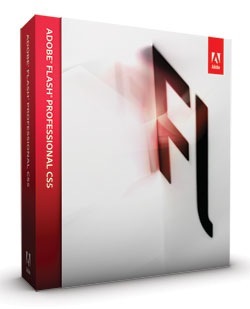By Cyndy Cashman
The new features in Flash Professional CS5 (US$699; $199 for upgrades) from Adobe (http://www.adobe.com) should bring smiles to the faces of both designers and developers. Two big improvements in the way Flash handles video are the ability to preview an imported video on the Stage and adjust its parameters on the fly.
While viewing a video you can make adjustments such as changing its skin or coordinates via the Properties panel. The Properties panel displays the video’s time and allows you to set ActionScript cue points while the video is playing. The Component Inspector is gone. Component parameters, such as those for video, are accessed in the Properties panel.
Flash has a new file format, XFL. This new format is uncompressed and breaks the Flash file up into a usable directory of assets and XML files that contain all of the information about the document. For example, if I import an image into my Flash document, a copy of that image will be added to the external library folder. If you prefer, you can choose to save your file in the FLA format for either Flash CS4 or CS5.
One of my favorite additions is the Code Snippets panel. This new panel contains snippets of code for adding some of the most common functionality such as drag-and-drop, loading and unloading objects, event handlers, animation, and video controls. The snippets are easy to use. For example, to add drag-and-drop functionality to a movie clip, I only need to select the instance, give it an instance name, and double-click on the drag-and-drop snippet. Flash adds an ActionScript layer and writes the code in the Timeline. You can add your own snippets to the Code Snippets panel, as well.
New templates that you may actually want to use have been added. Animation templates for rain, snow, and other effects, the advanced presentation template, and the sample file templates should give designers with little ActionScript knowledge a head start in designing advanced projects.
Improved text control may be one of the top new features in Flash CS5. The new Text Layout Framework (TLF) gives designers the ability to link text fields together creating threaded text. When published, the text can be highlighted and selected as though it were housed in one text field rather than multiple fields. The ability to flow text across multiple columns is another new text feature that should please designers.
The Properties panel controls makes setting the number of columns and spacing between columns easy. You can quickly experiment with setting text across two or more columns by entering the number of columns in the new Container and Flow section of the Properties panel. While these two features are my favorite improvements to working with text, Adobe has added advanced text styling, such as ligatures, discretionary hyphens, and text wrap to name a few.
The new Deco brushes allow you to quickly draw and animate smoke, particles, lightning, and fire. New patterns include skyscrapers, trees, and flowers. I had limited success creating realistic animation using the Smoke Animation tool, but I was able to easily achieve the look I wanted with the Fire Animation and Fire Brush.
Creating more lifelike animation is made easier with the IK Bone element Spring property. Adjusting the two attributes, Strength and Damping, allows you to adjust the way a bone reacts with a physical movement and the duration of the movement before the IK Bone returns to its original position.
I couldn’t find anything that I didn’t like about this latest upgrade. Flash CS3 users will definitely want to come up with the dollars to upgrade. If you’re an owner of Flash CS4 and animation isn’t your thing and you’re fluent in writing ActionScript, you may want to wait for the next upgrade. Personally, I already have a project on the burner that the new tools and features in Flash CS5 will shorten development time and more than pay for the price of the upgrade from CS4.
Rating: 9 out of 10
(This review is brought to you courtesy of “Layers Magazine”: http://www.layersmagazine.com ).


